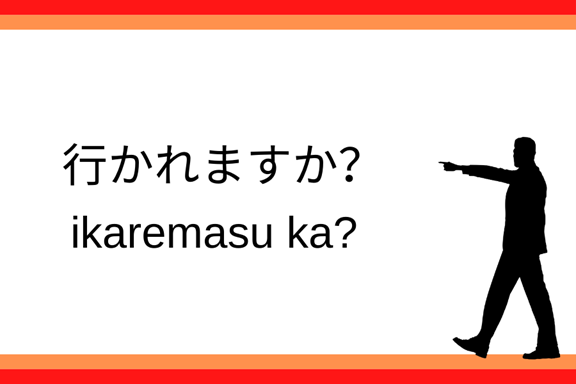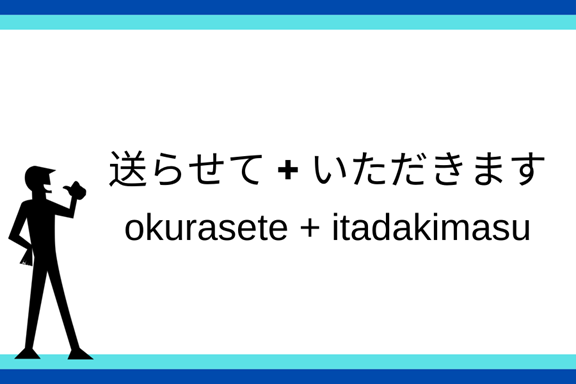Keigo—perhaps nothing strikes more fear in learners of Japanese than this intricate system of formality. It requires a mind shift to adjust to, but once you have the ropes, with enough practice, you too can become a keigo master.
If you need a refresher, keigo is an honorific speech in Japanese. It can be divided into three different categories:
- 丁寧語 (Teineigo): poite language, such as using “desu” and “-masu” to end sentences, and adding “o” or “go” prefixes to some nouns or adjectives. It is not connected with respect or humility; rather, it is just showing politeness.
- 尊敬語 (Sonkeigo): respect language, used when speaking about your customers or superiors.
- 謙譲語 (Kenjogo): humble language, generally used when you (or someone your equal) are doing something to a superior or customer.
For years, I myself struggled with the appropriate levels of formality. Despite taking and passing a university course dedicated to this aspect of Japanese, when I first entered the Japanese workforce, I still was not comfortable using it. What if I made a mistake and brought shame upon myself and my colleagues? What if I insulted the client by accidentally using kenjogo instead of sonkeigo? I was afraid of it, so I avoided using anything beyond simple teineigo.
However, down the line, I learned several hacks that adjusted me to keigo. I’d like to share them with you today to aid in your journey to fluent, formal Japanese.
My Setup: The Friendly Interview
My first job in Japan was through the JET Program as a CIR (Coordinator for International Relations). Even though I was expected to speak Japanese at my workplace on a daily basis, my coworkers and bosses did not care if I used sonkeigo and kenjogo, as long as I could use basic teineigo. However, when I left my position and was competing against native Japanese speakers for jobs, I knew I had to buckle down and learn more.
I started cramming and practicing more, and even though I was still not entirely comfortable with using sonkeigo and kenjogo, the day came that I had an interview at an international development NGO entirely in Japanese. I was speaking with two interviewers (Person A and Person B), and at some point in my almost-friendly, chat-like interview, I learned that Person A was from Oyama, a city not far from where I was on JET.
“Yoku Oyama ni irasshaimasu ka?” (“Do you go to Oyama often?”) I asked, and was immediately met with snickering by Person B. She turned to Person A and said in a half-mocking tone, “Yoku irasshaimasu ka?”
What went wrong?
Hack #1: There Is Such a Thing as Too Much Formality.
Most of us have the very real concern of not being formal enough. However, there is an issue of being too formal.
Back in my interview, luckily, Person A responded graciously to my question like nothing was weird. It took me a minute to understand why I was being mocked—it turns out, despite being in an interview where I wanted to come across as having strong professional skills and showing off as much keigo as I could, my hesitant use of “irasshaimasu” was actually too formal. This is not to say that you should never use “irasshaimasu” to your interviewer—however, it’s important to judge how formal you really need to be.

I imagine I’m not alone in having a “polite voice” in English when I speak to, for example, wait staff or people on the phone (if you don’t know what I’m talking about, pay attention to how you and the people around you speak when you’re in semi-formal settings). Imagine keigo to be your “polite voice,” perhaps a bit higher in tone than your usual speaking voice, with a kind smile. Now, in that “polite voice,” do you say to your waiter, “Hi, could you get me another glass of water?” or do you say, “Hello, would you be ever so kind as to refill my water glass?” Using teineigo is like using your polite voice, and your sonkeigo and kenjogo determine how fancily you want to decorate your sentences. In my case, even though I was wearing my black suit and white collared shirt, my interview was not so formal as to require excessively high levels of keigo, since the NGO I was interviewing at had more laid-back approach than many traditional Japanese companies.
In essence, don’t worry about having every word you’re taught mastered, especially if you’re not comfortable using them yet. Focus on building up your keigo bit by bit. Become flexible in what you’re comfortable with before adding on anything else, lest you sound overdone. In my next two hacks, I’m going to show you how to start this journey by making keigo out of words and grammar you probably already know.
Hack #2: When Your Superior/Client Is the Subject, You Can Get By with the Passive Voice.
One thing many learners struggle with is how to use sonkeigo enough and how to memorize sonkeigo-specific vocabulary, such as “goran ni naru” (for “miru”) and “irassharu” (for “iku,” “kuru,” or “iru”). This is not to say that these words are not good to learn, but if you’re ever in doubt or can’t remember which word to say, just make your verb passive when the person you want to show respect to is the subject. Note that this is a mildly polite form of keigo, and doesn’t show quite as much respect as other terms, but it still is often sufficient.
For example, let’s go back to my interview blunder. I was overdoing it by using “irasshaimasu” to my interviewer, and instead would have been better off by saying, “Yoku Oyama ni ikaremasu ka?” using “ikaremasu,” the passive voice in teineigo of “iku.” By using that, I would have shown him respect without appearing too stiff. Essentially, in a stiff interview, if you can, go for higher levels of politeness (“o” + verb stem + “ni” + “narimasu,” etc.) and vocabulary-specific sonkeigo. However, in a “let’s chat” interview like this, you should be able to get by by referring to the other in the passive voice.

Hack #3: When You Are the Subject, Just Use Causative + “-Te Itadakimasu.”
I feel like the light shined down upon me when I realized this one. Similar to Hack #2 above, it’s of course good to have in mind kenjogo-specific vocabulary, such as “itasu” (for “suru”) or “ukagau” (for “kiku”). However, if you’re ever stuck, just use the causative “te” form of a verb and add “itadakimasu” (the sonkeigo form of “moraimasu”).
For example:
Imagine you are speaking to your boss, and you want to tell them, “I will send you the document.” You may pause in a panic trying to think of an appropriately formal word for “send”—you need to show humility to your boss, so simply “okurimasu” may not cut it. Using the above formula, change “okurimasu” into its causative “te” form (“okurasete”) and tag on “itadakimasu.” Voila! “Watashi wa sono dokyumento wo okurasete itadakimasu” should get the job done for you.
Alternatively, you can also use the kenjogo “o” + verb stem + “shimasu” formula (“o-okuri-shimasu”), but I prefer sticking to my trick here especially at the beginning, as this often runs the risk of getting mixed up with the sonkeigo “o” + verb stem + “ni” + “narimasu” formula touched on above.


Conclusion
Until I got a job where I was expected to speak on par as a native, I was floundering in keigo, as many other non-native learners are as well. However, once I figured out these hacks, I was able to build on them and expand my keigo arsenal. Keigo is half-cultural, half-linguistic, with many gray areas existing. However, once you find your first light to the end of the tunnel, the feeling of accomplishment is fantastic. I even enjoy manipulating it and sprinkling it into my daily conversation. You may think me crazy now, but just wait: build a strong keigo foundation, and your Japanese will become significantly more flexible and nuanced. Do kangaeraremasu ka?





